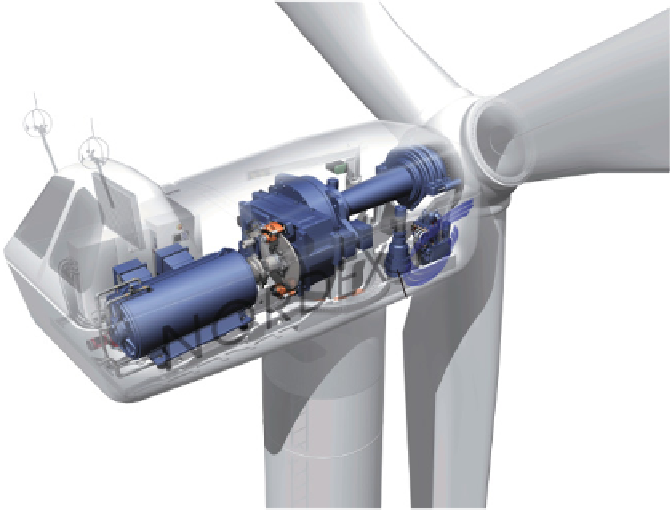Environmental Engineering Reference
In-Depth Information
wind sensors
Rotor blade
gear
hub
brake
generator
yaw drive
nacelle
tower
Figure 8.11
Structure and components of a wind turbine.
Graphics: Nordex AG.
because of a considerably heavier and more expensive generator. However, until
now both wind turbine concepts, that is, with or without a gearbox, have been
equally successful in the turbine market.
Modern wind turbines adapt their rotation speeds to the wind speed. When wind
speeds are low a turbine reduces its rotation speed, thereby making better use of the
wind. Wind speeds of 2.5 to 3.5 m per second, that is, 9 to 13 km/h, are usually
suffi cient to start a turbine. Wind turbines reach their maximum capacity with wind
speeds of around 13 m per second (47 km/h or 29 mph). If the wind speed increases
more than that, a turbine begins to limit its speed. It pitches the rotor blades less
favourably into the wind, thereby reducing the momentum. This enables the turbine
to keep its output at a constant level.
When wind speeds are very high at more than 25 to 30 m per second (90 to
108 km/h), a turbine moves into storm mode. The yaw drive turns the entire turbine
out of the wind and brakes hold the rotor fi rm.
As large wind turbines already produce high output, they usually feed their electric
current directly into a medium-high voltage system. A transformer converts the
generator voltage into the mains voltage.
Maintenance on wind turbines often requires an arduous upward climb for the
technicians, so some turbines are equipped lifts (Figure 8.12). Modern wind turbines
have a relatively low incidence of outages, and a turbine service life of 20 years
can be expected.

